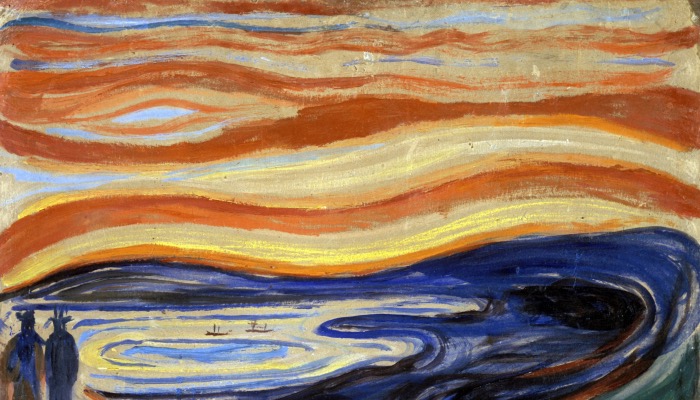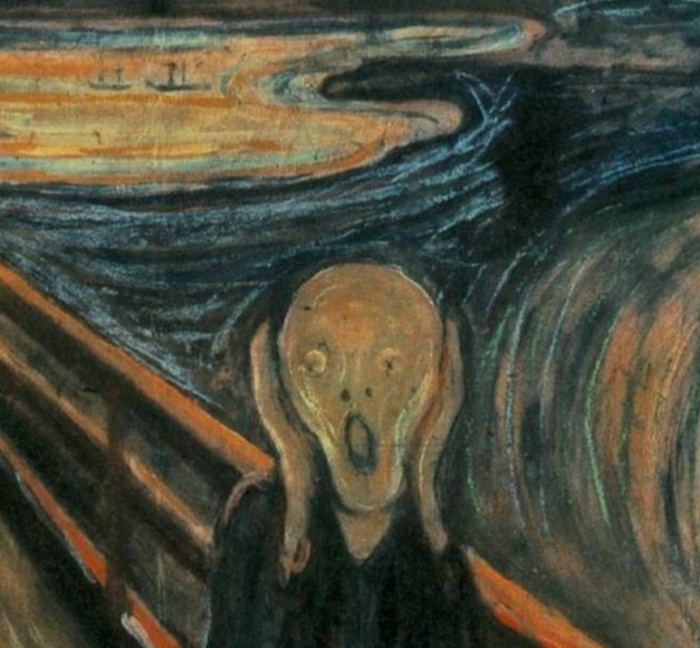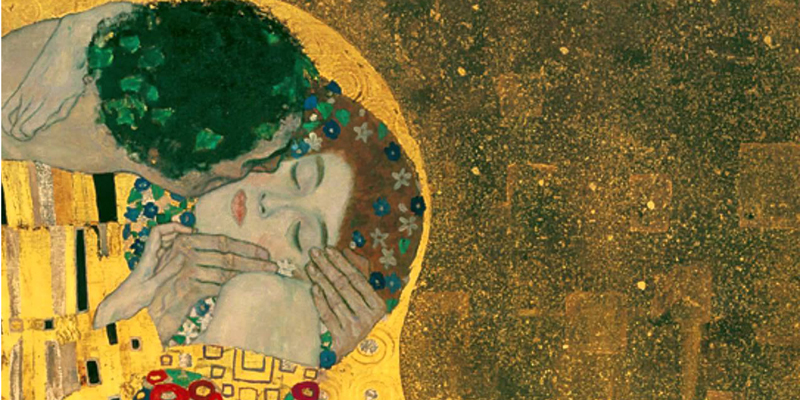
Have you ever wondered what Expressionism is and what it really represents in the art world? This movement, which emerged in the early 20th century, mainly in Germany, was an important cultural response to the tumultuous social changes of the early 20th century. In this post we will explore its characteristics, works, artists and themes.
What is Expressionism: works, artists and themes

Urlo di Munch (dettaglio)
Expressionism was born out of a deep sense of unease about the relationship between humanity and the world around it. It is an artistic movement that attempts to explore authenticity and spirituality lost in an era of rapid modernisation.
ORIGINS OF EXPRESSIONISM
The birth of Expressionism was a kind of rebellion against Impressionism and traditional academic art, moving art towards a more introspective and emotional investigation.
The works of Vincent van Gogh, Edvard Munch and James Ensor are considered to be forerunners of this movement, as they present reality not as it is but as it appears to the artist’s eye and because the colours on the canvas become tools for expressing a whirlwind of emotions and desires.
WHAT EXPRESSIONISM IS
To explain in a few words what Expressionism is, we need only dwell on the fact that it is an artistic movement that wants to give voice to the artists’ inner torments rather than represent the outside world realistically.
The quality of an expressionist work of art is judged by the emotional sincerity with which the artist expresses his or her reaction to the anguish of the modern world. Bold brushstrokes, exaggerated undulations and intense colours are tools used by the Expressionists to manifest a critical view of contemporary society.
The term ‘Expressionism‘ was coined in 1910 by the Czech art historian Antonin Matejcek to mark the difference of this new movement with Impressionism, which celebrated external beauty.
The Expressionists wanted to investigate the depths of human experience, often describing difficult and painful realities.
GERMAN EXPRESSIONISM
The German Expressionist movement, with its roots deeply embedded in the tumultuous current of modern society, helped revolutionise the artistic landscape of the 20th century. One of the most important groups of this movement was Die Brücke (The Bridge), founded in Dresden in 1905. Artists such as Ernst Ludwig Kirchner, Karl Schmidt-Rottluff, Erich Heckel and Fritz Bleyl sought to create a bridge to a new form of artistic expression, exploring themes of alienation, disillusionment and social criticism through bold brushstrokes and vibrant colours.
FRENCH EXPRESSIONISM
Outside Germany, Expressionism also found fertile ground in France. Georges Rouault and Marc Chagall, influenced by various artistic movements, customised Expressionism by incorporating elements of Fauvism, Cubism and Symbolism. Through their lively paintings and religious or melancholic themes, these artists broadened the horizon of Expressionism, giving it a transnational dimension.
ARTISTS OF EXPRESSIONISM
Edvard Munch, Wassily Kandinsky and Gustav Klimt are the great artists of Expressionism.
Munch, with his works charged with angst, Kandinsky, with his abstract and colourful approach, and Klimt, with his Art Nouveau style, broke new ground in Expressionism, helping to define the multi-faceted character of this art movement.
Edvard Munch, with works vibrating with raw emotion, anticipated the visual language of Expressionism. His iconic works such as ‘The Scream‘ explore existential anxiety in a society in turmoil.
Wassily Kandinsky led Expressionism towards abstractionism, creating a unique dialogue between colours and forms that invites spiritual reflection. The key work is Kandinsky’s Composition VIII in which each line has a psychological meaning.
Gustav Klimt paved the way for a new interpretation of the world through his works, inspiring generations of expressionists. Works such as Klimt’s Kiss represent the triumph of eros, scandalising the public because they are perceived as bordering on pornography.

Il Bacio di Klimt
Expressionism continues to represent a crucial phase in the evolution of modern art, a bridge between past tradition and future innovation, illuminating the path of countless artists in their search for authentic and meaningful expression.
Its direct evolution is Abstract Expressionism, which originated in the United States.


Analisi dell’arte riflessa e commentata bene come espressione di una rivoluzione sociale e interiore della persona .Ottimo come giudizio